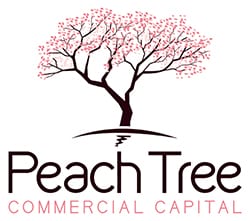Believe it or not, we’re already heading into the second quarter of 2024. Financial performance in the first quarter is encouraging as the year got off to a strong start. While we didn’t see rate cuts from the Fed in the first few months, tech stocks gained in anticipation of an AI boom, leading the market to a nearly 30% increase over last year. For now, at least, it looks like the economy has dodged the predicted recession.
As we go into the next quarter, look to invest in efficiency, quality, and product/service evolution. Supply chain changes bring efficiency benefits, quality is a big driver of business valuation right now, and leading businesses are pivoting toward service-based models and enhanced product design. Lean into qualitative investing over quantitative with brands that score highly in social impact, customer loyalty, brand recognition, and proprietary practices.
Read on for more details and financing vehicle recommendations. Be sure to talk to your broker about how your business can use these ideas to see maximum gains in 2024.
Quality Valuation
Business valuation is important both when you’re looking to acquire a new business for your portfolio and when you’re hoping to gain investors for your existing business. In 2024, both investors and lenders are looking for quality over quantity. That means there is a shift in focus, especially given drops in valuation to some of the so-called “unicorns.”
While businesses still need a stable financial foundation and capital structure, consistent performance, and healthy cash flow, today’s investors want management competence, brand recognition, and growth potential as well. Big exits are down, so businesses need to focus on fundamentals and invest in things that will develop cash flow and provide long-term value. Businesses that tick all of these boxes will be seen as target for investments, especially for those with a three-to-five-year positive outlook.
For businesses looking to expand their acquisitions portfolio, there are many reliable financial vehicles to choose form. One of these is SBA loans, especially since they carry the advantages of capped and variable rates. An SBA 7a loan will give you up to a 10-year term for business acquisitions, plus some working capital to handle incidentals. These loans have super low minimums, at 10% down, and the interest rates will automatically drop when the Fed cuts rates later this year.
Evolution
The big three industries expected to see maximum growth this year are healthcare, utilities, and AI, but take a look further up the supply chain if you want to focus your investments wisely. This means that, instead of investing in hospitals and clinics, a smarter move would be to look at medical device manufacturers, PPE suppliers, and pharmaceuticals.
Out of the three top growth industries, utilities will likely be the most affected by November’s election. As each party has different priorities when it comes to revamping the country’s energy supply, the winning party can implement regulations and incentives that directly impact the energy sector in various ways. Significant changes to utility infrastructure will be expensive, a cost companies are likely to pass on to consumers. The more capital investment in infrastructure, the more utilities profit.
AI may seem like a trend, but it’s not going to disappear. While it’s been around in various forms for decades, there’s a clear surge in public interest this year. Many businesses are tapping into AI capabilities to grow their service options and evolve their production lines. Even if keeping an AI on board at your company doesn’t fit your business model, you can still look at accessing one-time optimization services and streamlining your hiring process with AI.
This isn’t the year to empty your company’s savings account, even if it is to tap into tech, healthcare, or utility industry growth. For a working capital boost that saves you from pulling capital out of long-term investments, talk to your broker about a line of credit. A secured line of credit lets you leverage your assets for lower interest rates and a higher credit limit. Use funds for whatever your business needs and only pay interest if you have a balance that carries over.
Onshoring Creates CRE Opportunities
To mitigate supply chain concerns highlighted by the pandemic, more and more companies are looking at onshoring and nearshoring. With increased instability overseas, it’s more important that manufacturers keep operations close to home where they won’t be impacted by embargoes, blockades, and opportunistic pirates. Being caught short of critical supply is an experience most don’t want to repeat.
Onshoring also appeals to companies looking to increase their sustainability and transparency in a world where social responsibility is increasingly scrutinized and valued. One upside for investors is that onshoring increases demand for warehouse real estate. This creates opportunities in the industrial CRE space for investors who want to capitalize on that demand.
To find the right financial vehicle to carry your next CRE investment, your broker will likely point out the value of asset-based loans. Rather than getting locked into a long-term traditional mortgage, asset-based loans are short-term loans that let you close quickly so you can start earning right away. The rental income from the new warehouse property can pay down the loan quickly, so you can keep more of the profits later. Plus, asset-based loans can help you with working capital for renovations and marketing.
There’s room in Q2 this year for smart investment moves and enhancements that will make you more attractive to potential investors, using what we’ve learned from the first quarter. Look for qualitative opportunities to improve your business.
Most importantly, talk to your broker about financing the emerging opportunities in your industry. Talk with our team today.

